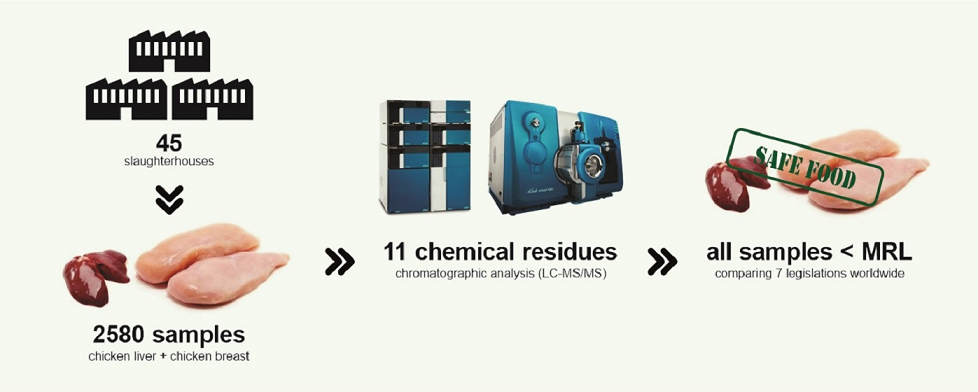Brazil chicken production is around 13 million tons and about a third is exported to over 150 countries, placing Brazil as the world largest chicken meat producer, and therefore it is crucial to follow the legislation of all importer markets. This study aimed at evaluating ten chemical residues (amoxicillin, bacitracin, colistin, dinitolmide + zoalene, spectinomycin, roxarsone, tiamulin, tylosin, trenbolone acetate and virginiamycin) in chicken breast and one (halofuginone hydrobromide) in chicken liver. Most of these compounds are not covered by National Residues and Contaminants Control Plan (PNCRC), although they are mandatory to export chicken meat worldwide. A total of 2580 samples were collected from 45 industries and submitted to analyte extraction and chromatographic verification of compliance in an accredited laboratory. The results showed that no compound exceeded the maximum residue limits established by worldwide legislation. All results were below the method detection limit, thereby confirming the capability of Brazilian chicken meat plants in complying to foreign markets. Our results can provide occurrence trends of veterinary drug from poultry products in Brazil.

